Six ways to use big data in ecommerce (infographic)
The growth of big data analytics (or BDA) is the new frontier of innovation and competition in the giant spectrum of the ecommerce landscape. Big data has thrown up new challenges and opportunities, which have been forged by the information revolution. In this infographic, we explore a variety of ways that businesses are currently using big data in ecommerce.

Six lucrative ways to use big data in ecommerce.
1. Predict trends.
Every online retailer wants to know the next best-selling product before their competitors, and there are few better strategies than using employing big data to predict trends.
By introducing trend forecasting algorithms, online retailers can remove the guesswork when predicting trends of what’s causing a buzz online.
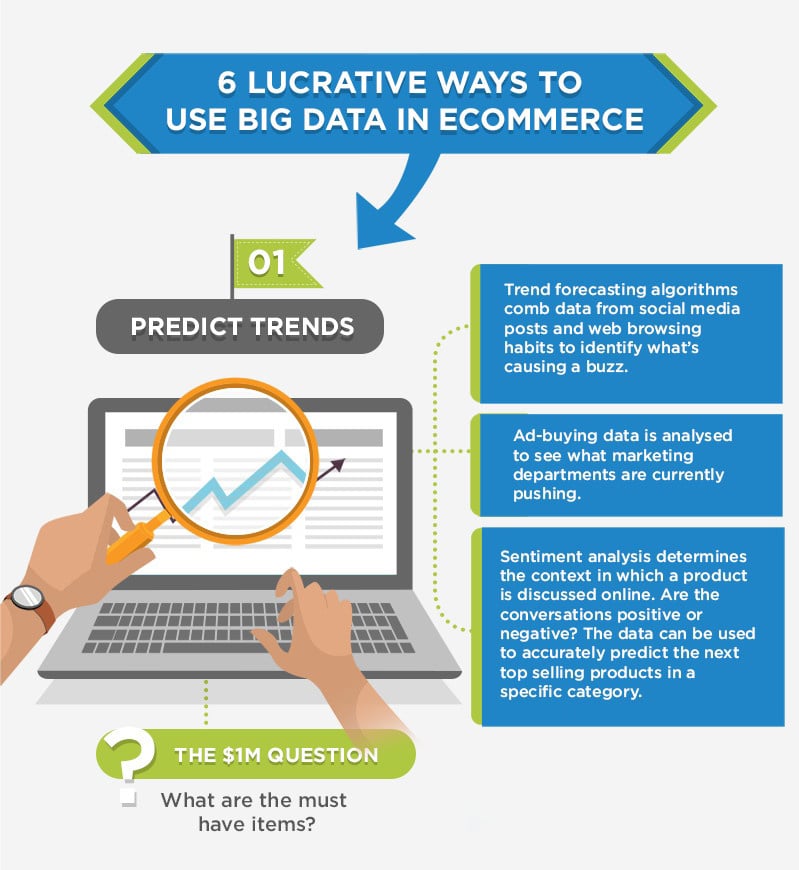
2. Optimize pricing.
Before the explosion of big data and innovative pricing systems, many businesses would rely on comparative pricing with competitors, and benchmark the value of their own product or service to come up with the best pricing strategy.
The issue with this manual approach is that it becomes unmanageable for larger ecommerce businesses that stock thousands of items. The perfect scenario would be for each product to have its own strategy, and big data makes this possible.
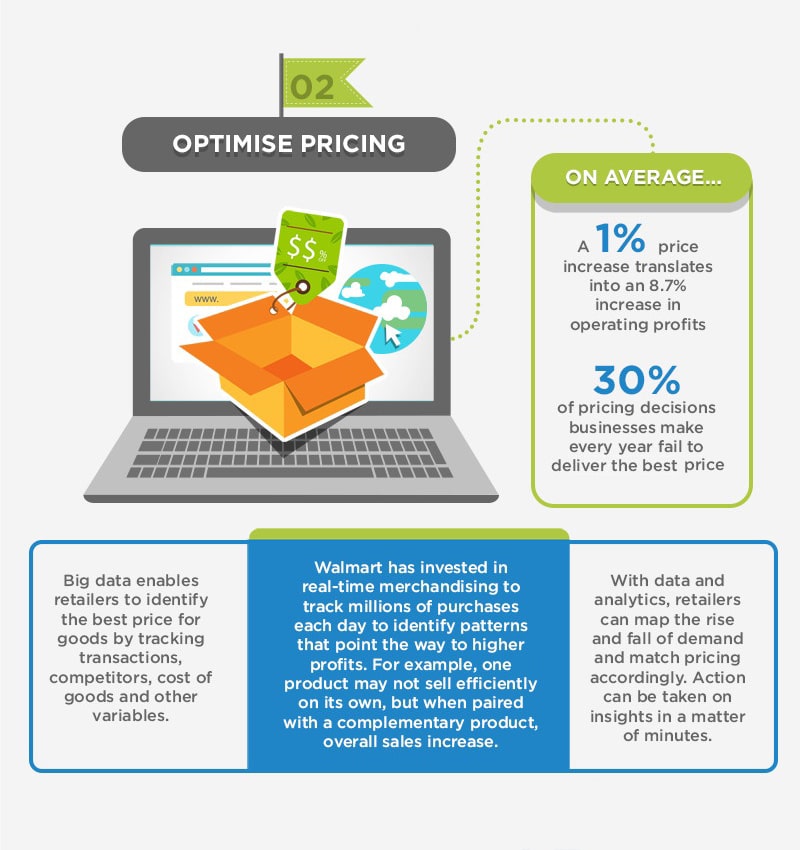
3. Forecast demand.
Almost every business performs demand forecasting in some capacity.
For example, if you’re a restaurant owner, you will need to forecast how many customers you’ll have in tomorrow and what meals they’ll order so you know which ingredients to purchase and how many chefs to have in the kitchen.
If you sell shirts online, then you’ll need to predict in advance how many shirts of each color you’ll need to order from your manufacturer.
Typically, business owners will forecast demand through their gut-feeling (“people will order more pancakes than waffles”) or a rule of thumb (“stock more snowman t-shirts around Christmas time”).
The issue with gut-feel or rules of thumb is that they’re not quantitative and they’re not based on anything concrete.
However, if you have enough historical data, you can make accurate demand forecasts and ensure you’re never at risk of overstocking or understanding.
To get this data and analytics, consider using an inventory and order management system.
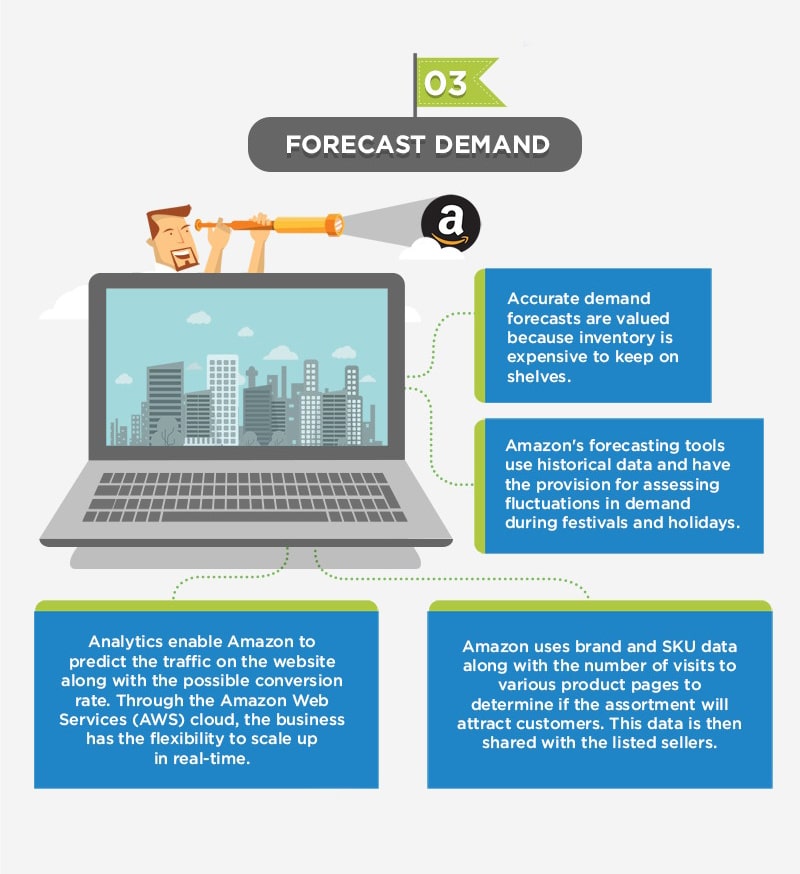
4. Create personalized stores.
It has been well documented that personalization increases conversions and few would argue with the data.
For many years, Amazon has blown the ecommerce industry away with its customer-centricity, and many businesses are now turning to big data to replicate such tailored experiences.
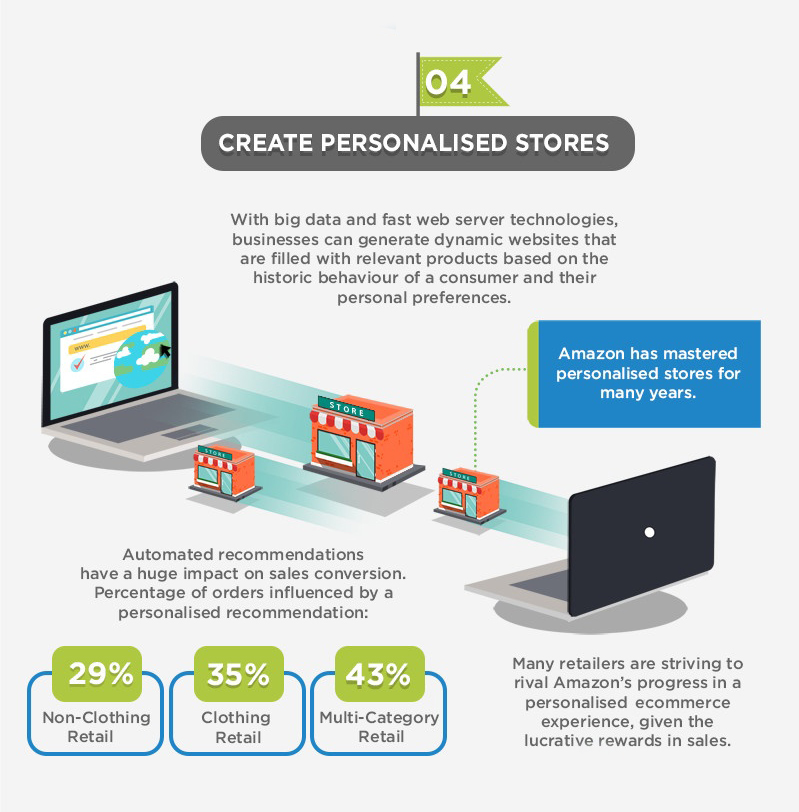
5. Optimize customer service.
Exceptional customer service is vital for both customer satisfaction and retention in the retail industry. Successfully implementing a well-defined customer service strategy can no longer be an afterthought. Big data allows businesses to optimize their customer service and provide an enhanced customer service experience.
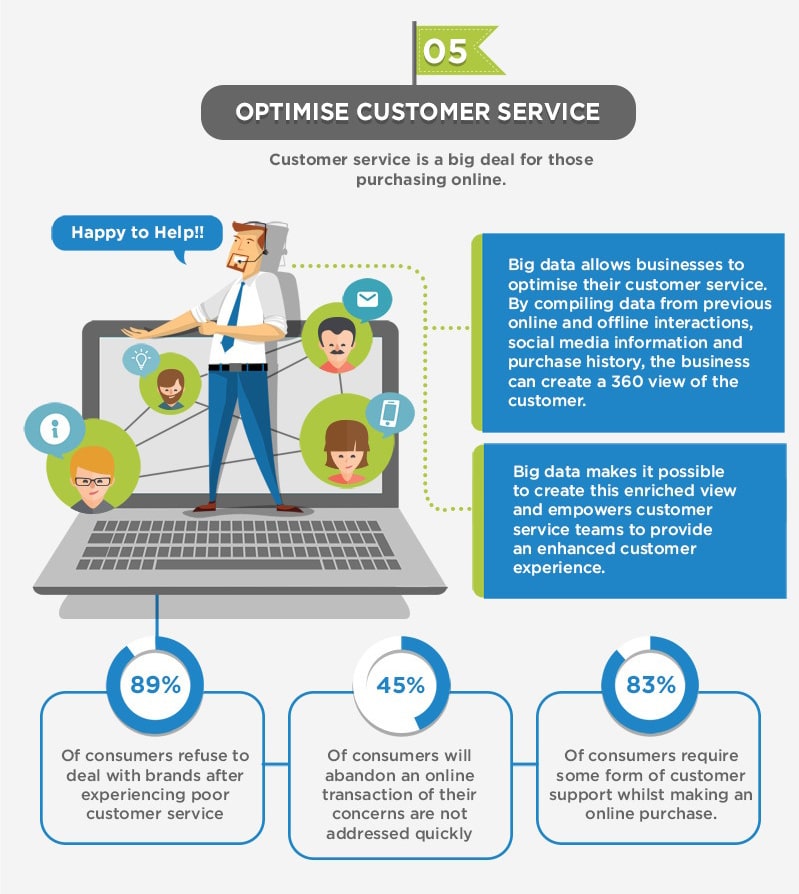
6. Generate more sales.
Big data can play a pivotal role in generating more sales for any ecommerce business. With literally trillions of dollars forfeited to cart abandonment, big data analytics can be used to deliver a customer experience that cannot be ignored.
Big data is a game-changer when it comes to retail and ecommerce. Implement effective big data strategies for your business to reap the rewards of better customer experiences and bigger profits.
